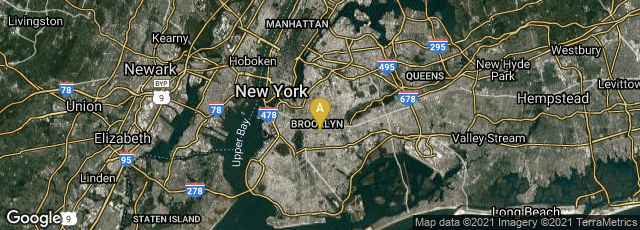

A: Brooklyn, New York, United States
Soon after American geneticist Thomas Hunt Morgan of Columbia University presented his hypothesis that the strength of linkage between two genes depends upon the distance between the genes on the chromosome, his student Alfred Henry Sturtevant, then a 19-year-old undergraduate, working in Morgan's Fly Room, realized that if frequency of crossing over was related to distance, one could map out the genes on a chromosome. If the farther apart two genes were on a chromosome, the more likely it was that these genes would separate during recombination, Sturtevant recognized that the "proportion of crossovers could be used as an index of the distance between any two factors" (Sturtevant, 1913). Collecting a stack of laboratory data, Sturtevant went home and spent most of the night drawing the first chromosomal linkage map for the genes located on the X chromosome of fruit flies. He showed that the gene for any specific trait was in a fixed location (locus), and in his 1913 paper Sturtevant included the first genetic map with all its genes in the correct position, and also laid out the logic for genetic mapping. His maps proved that genes are arranged in a linear sequence along chromosomes and paved the way for genetic maps of other species besides Drosophila.
Sturtevant, "The Linear Arrangement of Six Sex-Linked Factors in Drosophila, as shown by their mode of Association," Journal of Experimental Zoology 14 (1913) 43-59.
J. Norman (ed) Morton's Medical Bibliography 5th ed (1991) no. 245.4.